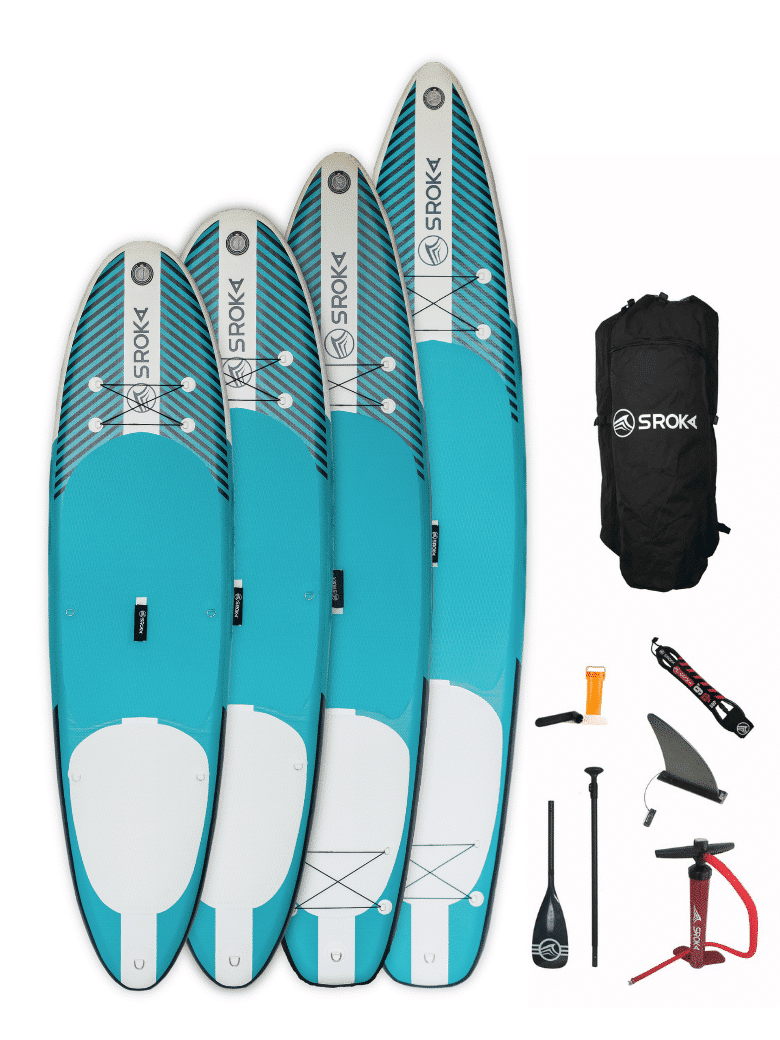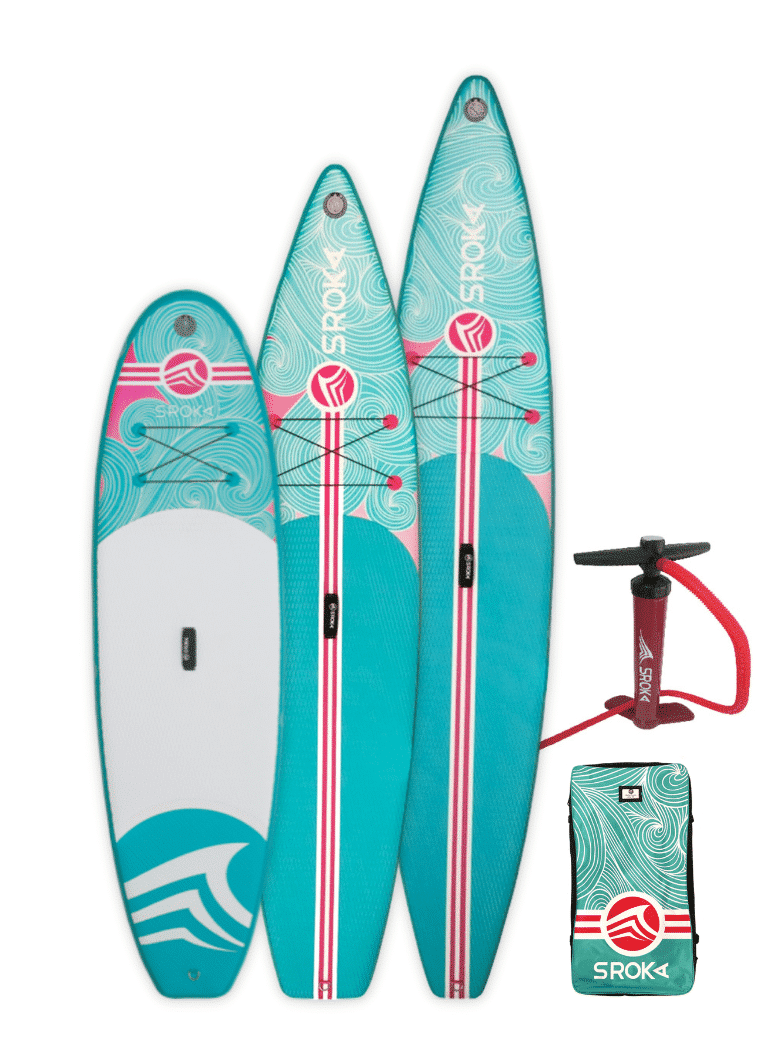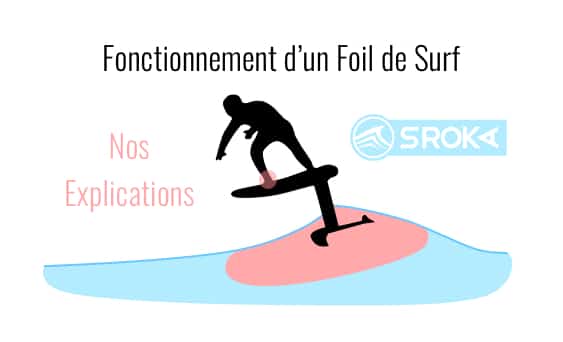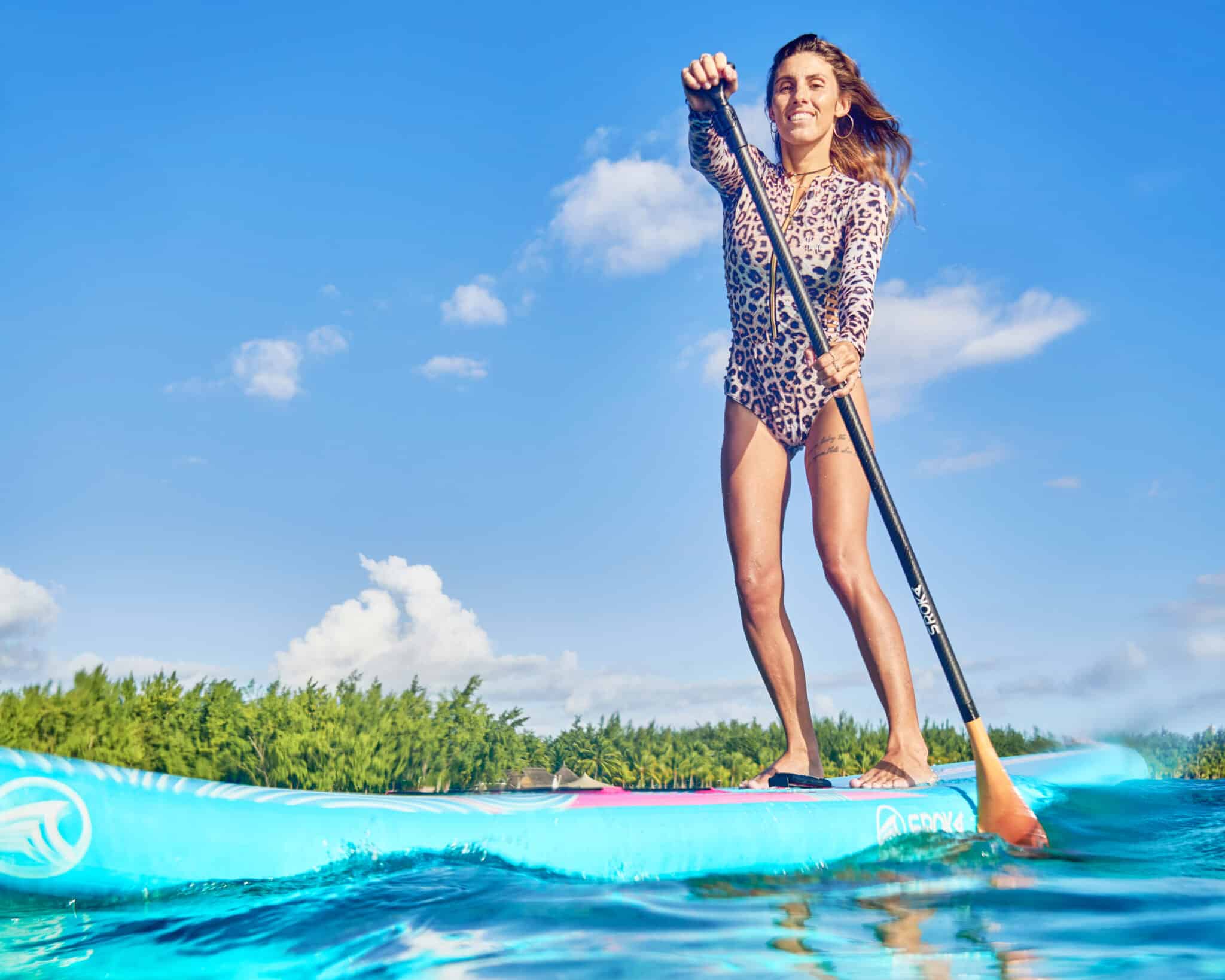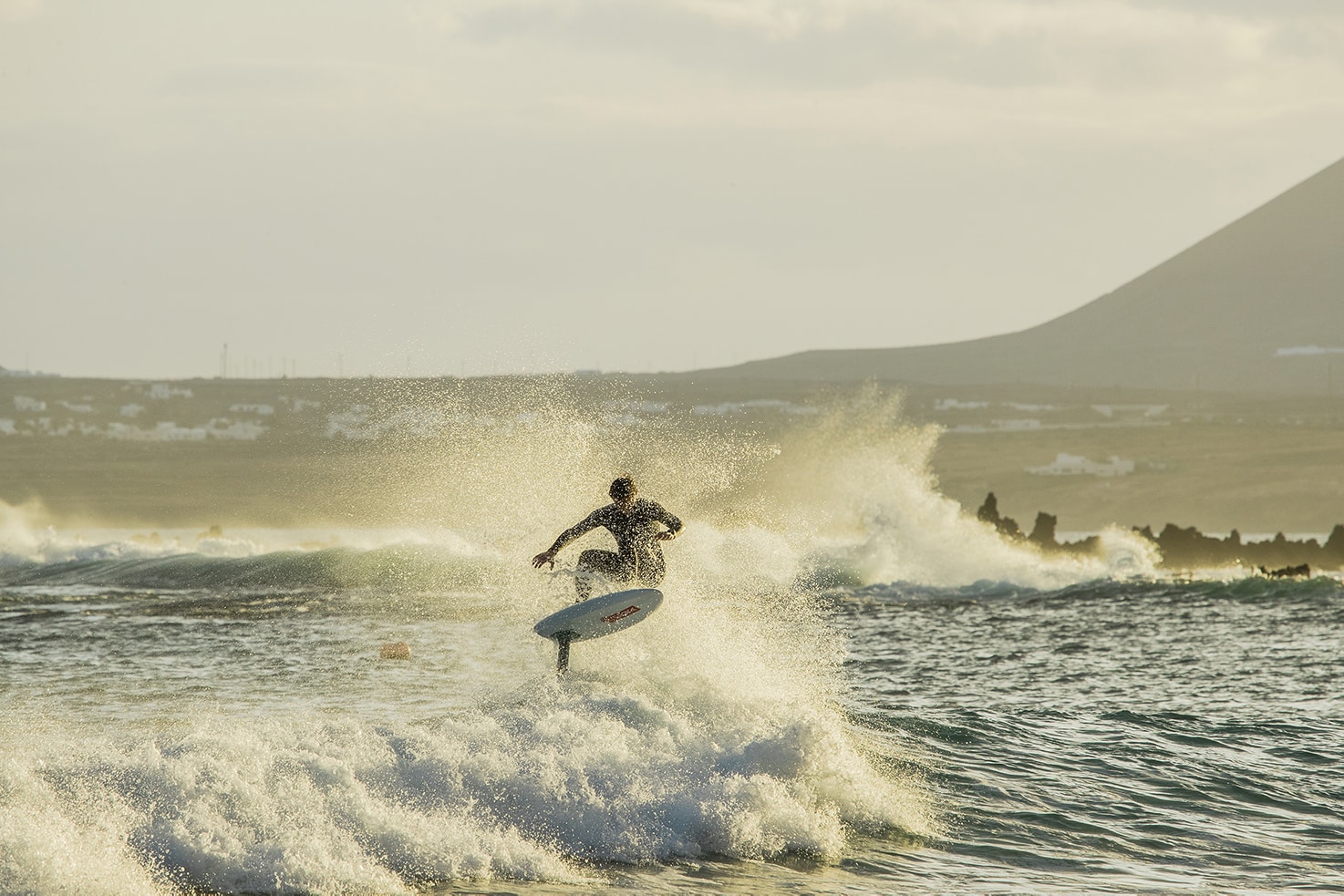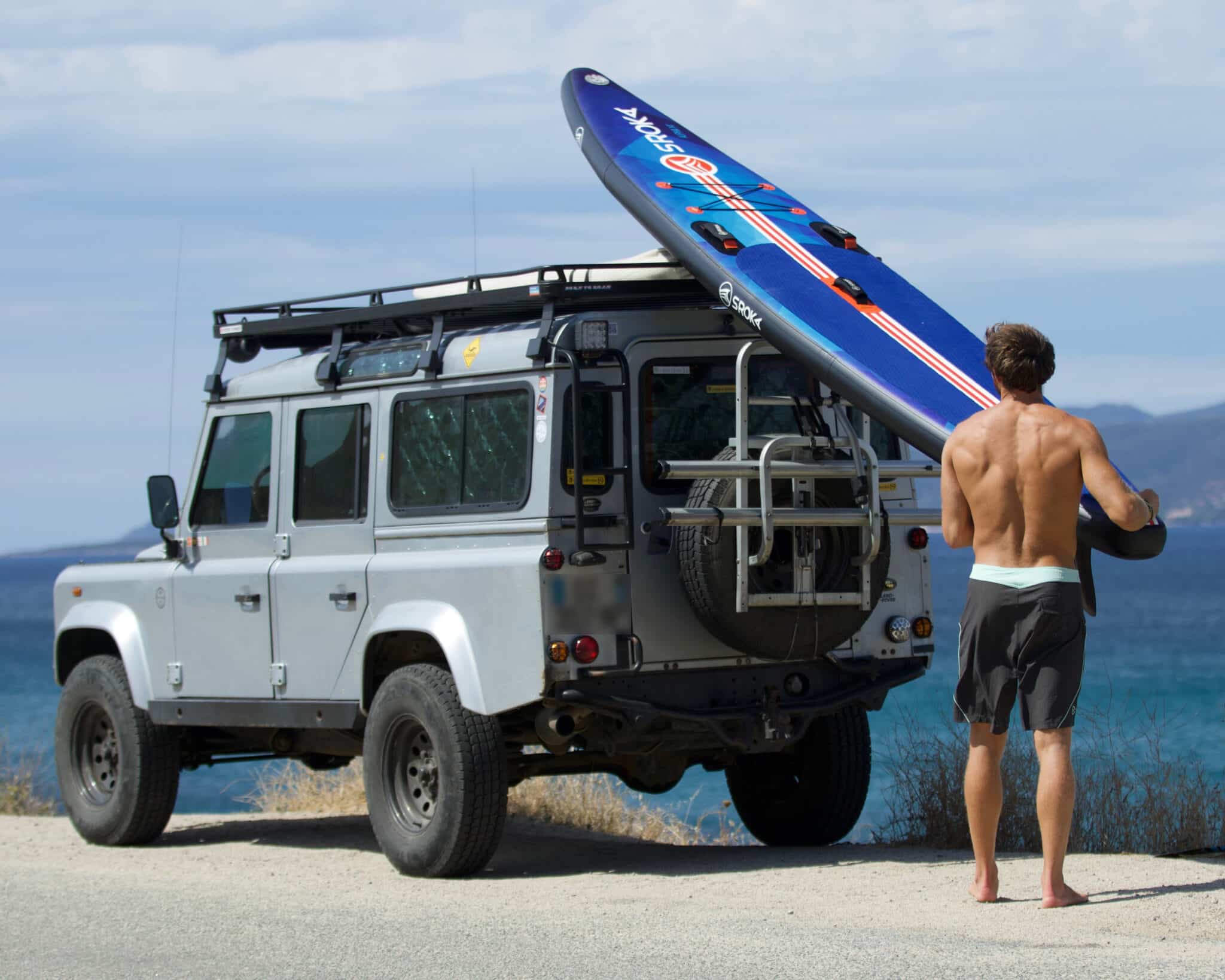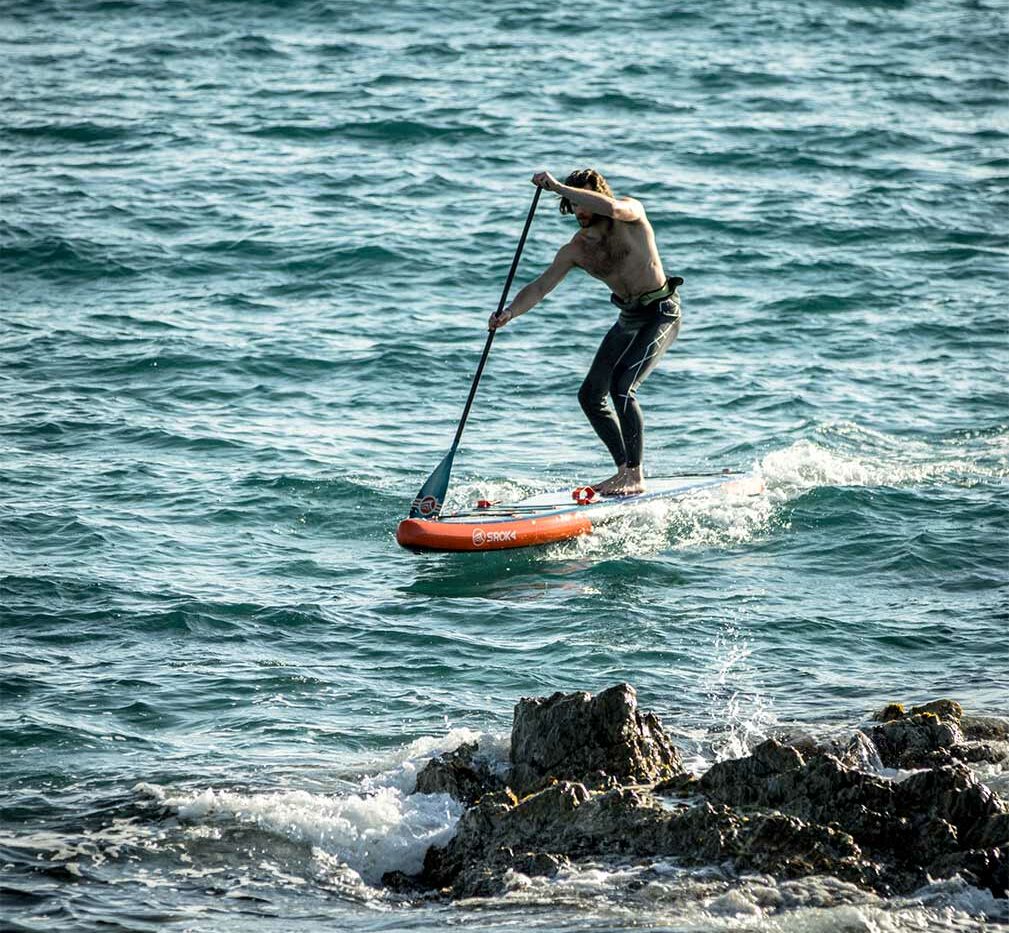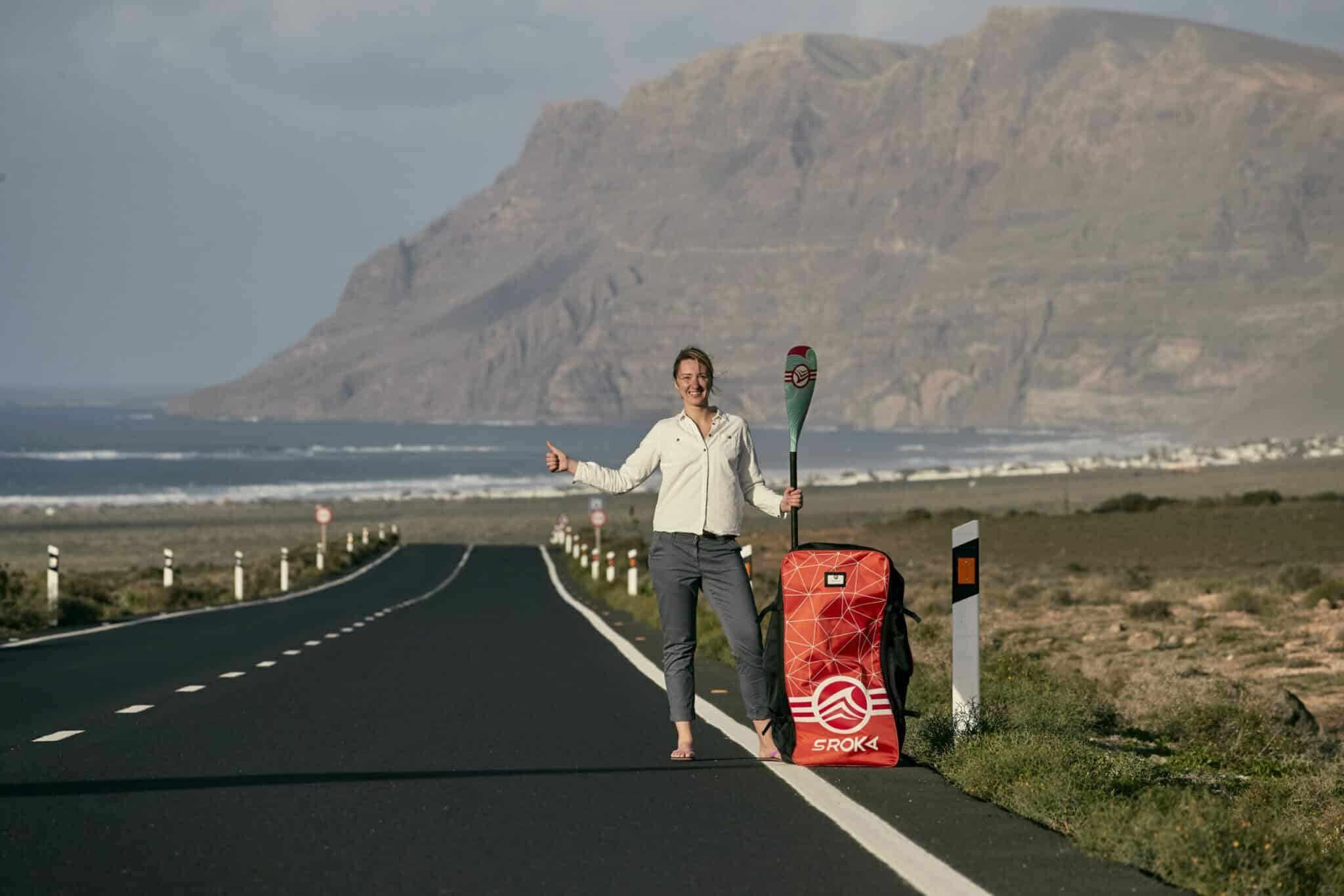 LE MAGAZINE
LE MAGAZINEOur tips for learning to stand up paddle

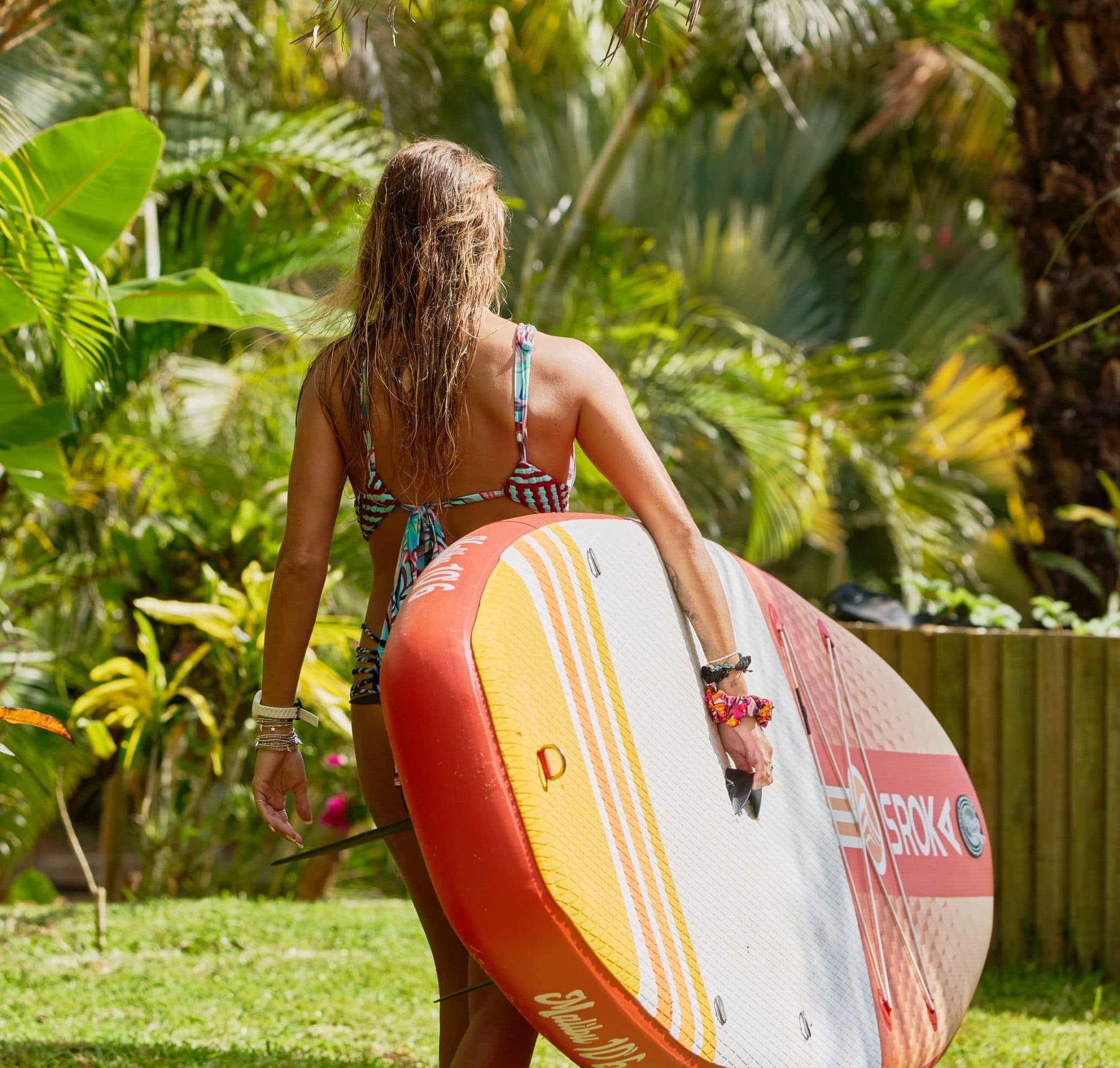
Apprendre le stand-up paddle n’a rien de sorcier, tous les débutants passent par là. En suivant ces quelques conseils, débuter le paddle sera pour vous un vrai jeu d’enfant !

The ideal spot to learn stand-up paddle
Pour la première mise à l’eau, choisissez un plan d’eau calme avec une mise à l’eau facile. Un départ de la plage sera plus simple pour monter sur votre paddle. Une fois que vous aurez trouvé votre équilibre vous pourrez vous essayer à partir d’un ponton ou d’une cale.
Quel SUP pour débuter ?
Pour apprendre le stand-up paddle, il vaut mieux privilégier une planche de paddle large avec un nez rond. Celle-ci vous apportera un maximum de stabilité lors de vos sessions. Les planches les plus fines au nez pointu sont davantage destinées à la recherche de vitesse et de performances.
Our inflatable paddles specially designed for beginners
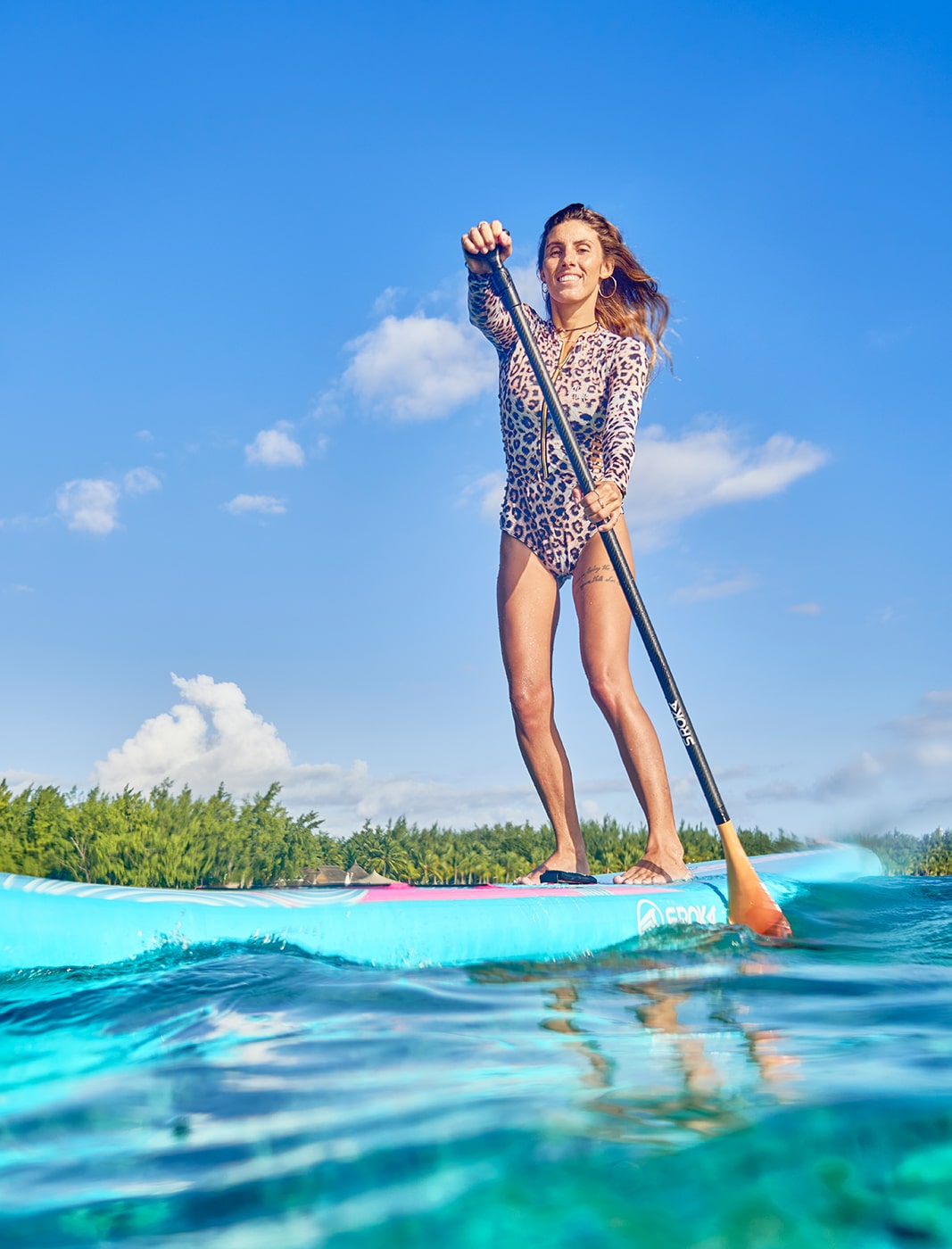
The first paddle session
1 – Bien régler sa pagaie
Afin d’être à l’aise et d’avoir les meilleures performances possible, il est important d’ajuster la taille de sa pagaie de paddle. Pour ce faire, il vous suffit d’ouvrir le système de réglage, puis de positionner votre pagaie à la verticale en face en vous. Tendez votre bras vers le haut et ajustez la hauteur de la pagaie de façon à ce que la poignée soit au niveau de votre poignet ( environ 15 cm au-dessus de votre tête). Enfin, il ne vous reste plus qu’à refermer le système de réglage.
2 – Commencer à genoux
Dans une eau peu profonde, commencez par vous mettre à genoux sur votre paddle pour vous familiariser avec l’équilibre. Posez votre pagaie sur votre planche à la perpendiculaire le temps de vous mettre à genoux. Lorsque vous êtes à genoux, prenez la en mains pour faciliter votre équilibre. Une fois que vous vous sentez à l’aise, vous pouvez commencer à pagayer. De cette façon, le geste et l’équilibre s’intégreront tout seul petit à petit.
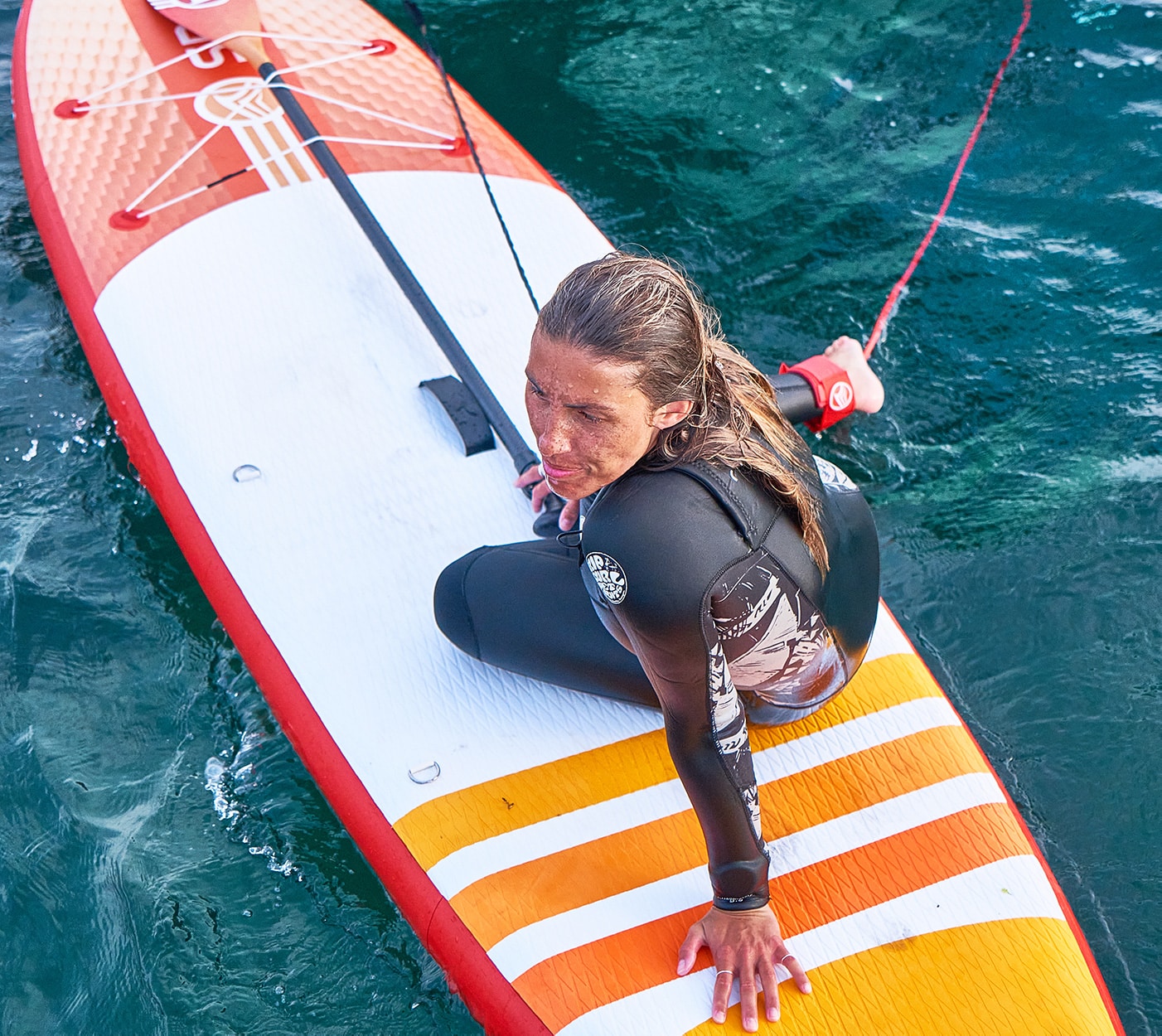
3 – N’ayez pas peur de tomber
Ne craignez pas la chute, ce n’est pas grave de tomber à l’eau. De plus, avec un paddle gonflable vous avez vraiment très peu de chance de vous blesser.
Pour ne pas vous faire mal en tombant, lorsque vous sentez un déséquilibre, évitez de vous plonger en avant ou en arrière. Le mieux est de se laisser tomber dans l’eau sur les côtés du paddle en tenant votre pagaie vers l’avant pour ne pas chuter dessus.
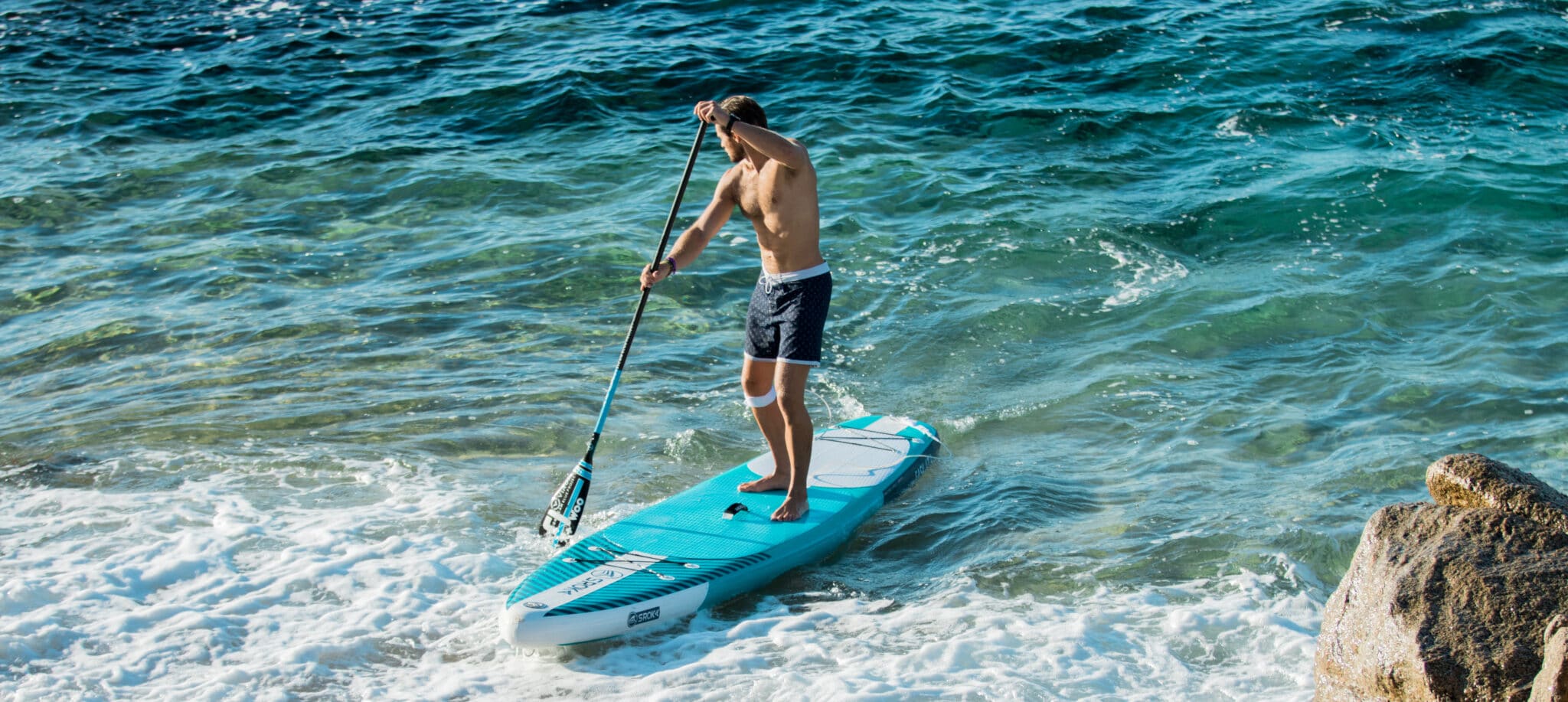
How to paddle a stand-up paddle?
Cette question peut paraître toute simple, mais lorsqu’on apprend le paddle pour la première fois ce n’est pas inné.
1 – Le positionnement des mains
Positionner une main sur la poignée en haut de la pagaie et l’autre proche du milieu de la pagaie, comme sur la photo. Lorsque vous pagayez de l’autre côté, il suffit d’inverser la position de vos mains.
Faite attention à tenir la pagaie dans le bon sens pour pouvoir avancer. Pour cela, le côté “creux” de la pale de votre pagaie doit être dans votre direction, c’est-à-dire orienté vers l’arrière de la planche.
2 – Avancer
Pour que votre planche avance, il faut donner 2 ou 3 coups de pagaie d’un côté, puis 2 ou 3 de l’autre. Aller chercher l’eau loin vers l’avant de votre paddle et ramenez la vers vos pieds en tirant avec votre main la plus basse. Pour bien avancer il faut prolonger la pale entière dans l’eau.

3 – Tourner
Pour tourner en paddle, il faut dessiner un arc de cercle avec sa pagaie du côté opposé à celui ou vous souhaitez aller. Répétez la manœuvre jusqu’à ce que vous alliez dans la direction souhaitée.
Pour tourner rapidement ou faire demi-tour en stand-up paddle, reculer sur la planche, et faites le même mouvement avec la pagaie tout en appuyant sur l’arrière de la planche. De cette façon, l’arrière du paddle va légèrement couler et ainsi faire point de pivot pour tourner rapidement.
Découvrez notre article complet pour apprendre à tourner en stand up paddle.
Have fun!
Le plus important est de prendre du plaisir. Pas besoin de chercher la performance à tout prix ! Cela viendra rapidement avec le temps et l’expérience. Une fois les bases acquises les possibilités seront multiples !
Si vous avez encore des questions à ce sujet, ou pour toute autre demande, n’hésitez pas à nous contacter !
 Le Magazine
Le Magazine



